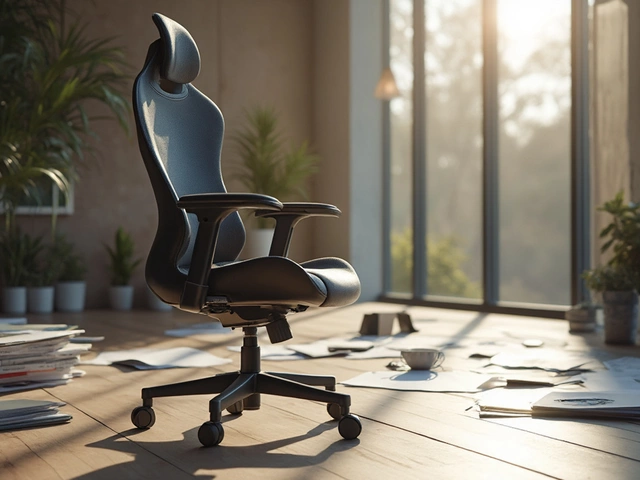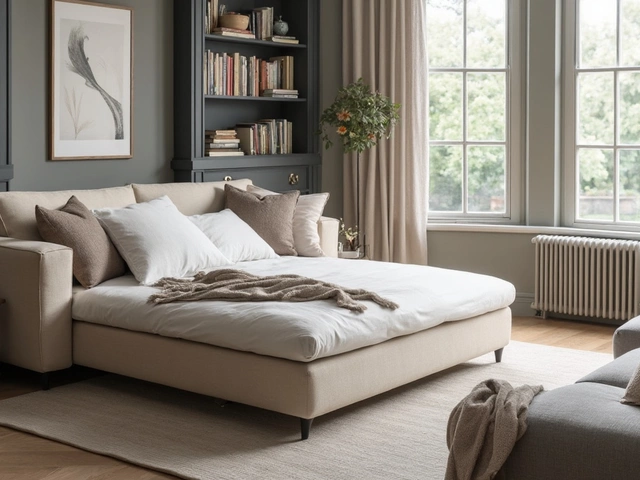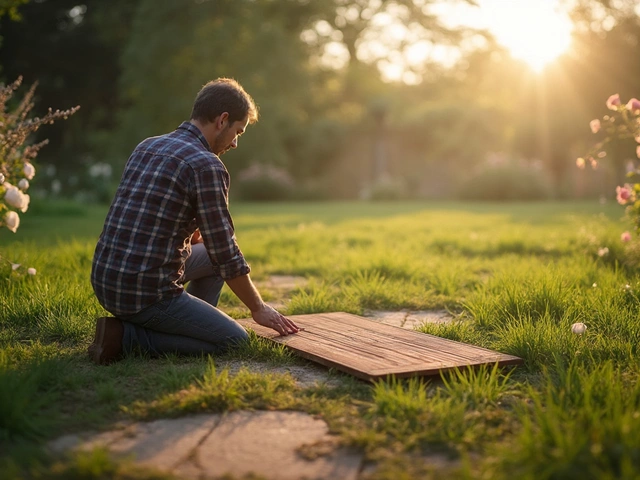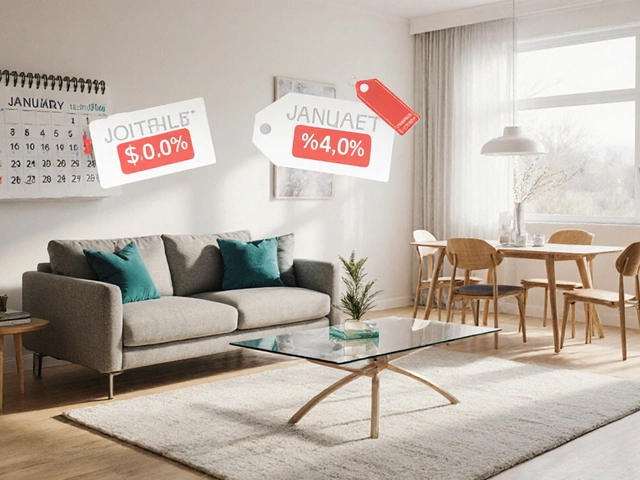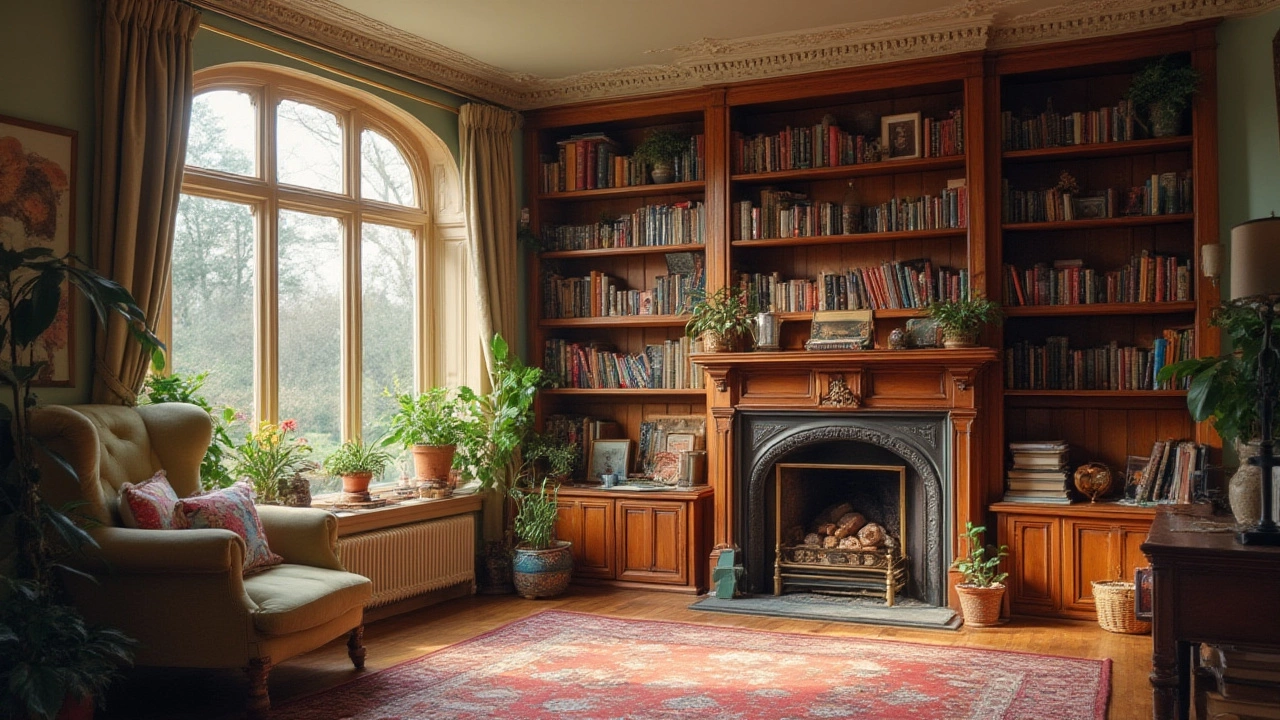 13
Jul,2025
13
Jul,2025
Imagine you walk into a room and see a wall filled with books. One person calls it a bookcase, another calls it a bookshelf. Is there really a difference? People use these words like they’re the same, but there’s more going on beneath the surface. Let’s clear up the confusion. If you’ve ever bought furniture for your home or office, you know choosing the right piece isn’t just about looks—it changes how you organize, display, and use your space. Small detail? Hardly. How you store your books, records, or even trophies can boost your room’s vibe or make it look cluttered. So what’s the real difference between a bookcase and a bookshelf? Does it even matter? Turns out, it does—and it’s not just about size or price. Bookcase versus bookshelf: they aren’t identical twins, and knowing the details can make your life easier.
What Makes a Bookcase a Bookcase?
A bookcase isn’t just a bunch of shelves slapped together. Think of it as the tank of the storage world—tall, sturdy, often enclosed, and meant to hold a lot. Most bookcases are freestanding. They don’t need to be attached to a wall. This makes them moveable, versatile, and dependable for bigger jobs. The classic tall rectangle with four or five shelves, closed sides, maybe even doors at the bottom? That’s your basic bookcase. The design isn’t accidental: books get heavy fast, and a true bookcase is built to handle a load. The vertical sides add strength. Many bookcases reach up to six or seven feet high, making the most of vertical space—even in tight apartments. Some have solid backs, keeping things from slipping behind, while open-back ones let you see your paint colors or wallpaper.
Materials matter, too. Hardcore readers or collectors often want real wood, or at least engineered wood like MDF, for long-term reliability. Particleboard works in a pinch, especially with a good finish, but it might sag under heavy hardcovers after a few years. If you’re worried about kid safety, be happy—most bookcases now include hardware for anchoring to a wall. Flat-pack bookcases are everywhere, but classic solid wood ones still fetch a premium at antique shops. Modern designs include built-in lighting, hidden compartments, or adjustable shelves. Wondering about weight? An average five-shelf bookcase holds up to 300-500 pounds if the shelves and back are sturdy.
Bookcases are all about showing off or stashing stuff out of sight. Some models have glass doors, keeping dust away from collectibles or first editions. Others offer drawers, lockers, or cabinet doors below the shelves for office supplies or board games. You’ll find them in fancy libraries, law offices, classrooms, or home studies—wherever people take storage seriously. Because they cover more wall space, bookcases can act as visual anchors, dividing areas or creating a cozy corner. Fun fact: the earliest bookcases were built in monasteries back in the Middle Ages. Priests needed a safe place for all those priceless manuscripts. Fast-forward to today, and bookcases aren’t just practical; they’ve become design statements, with color, shape, and even lighting adding to their appeal.
The biggest bonus? Bookcases multitask. Take a look at any trendy home tour and you’ll spot them filled with plants, art, liquor collections, or record albums. If you like experimenting with home decor, bookcases give you a big canvas to play with. There’s a reason furniture stores push “multi-purpose bookcases”—they work as open wardrobes, kitchen pantries, or even room dividers. Want your bookcase to last? Distribute weight evenly, avoid stacking the heaviest items on a single shelf, and check shelf clips or pins every few years. People with pets sometimes add chicken wire or low plexiglass to keep curious paws out. And if you’re renting, you can move your bookcase anytime—no wall drilling required.
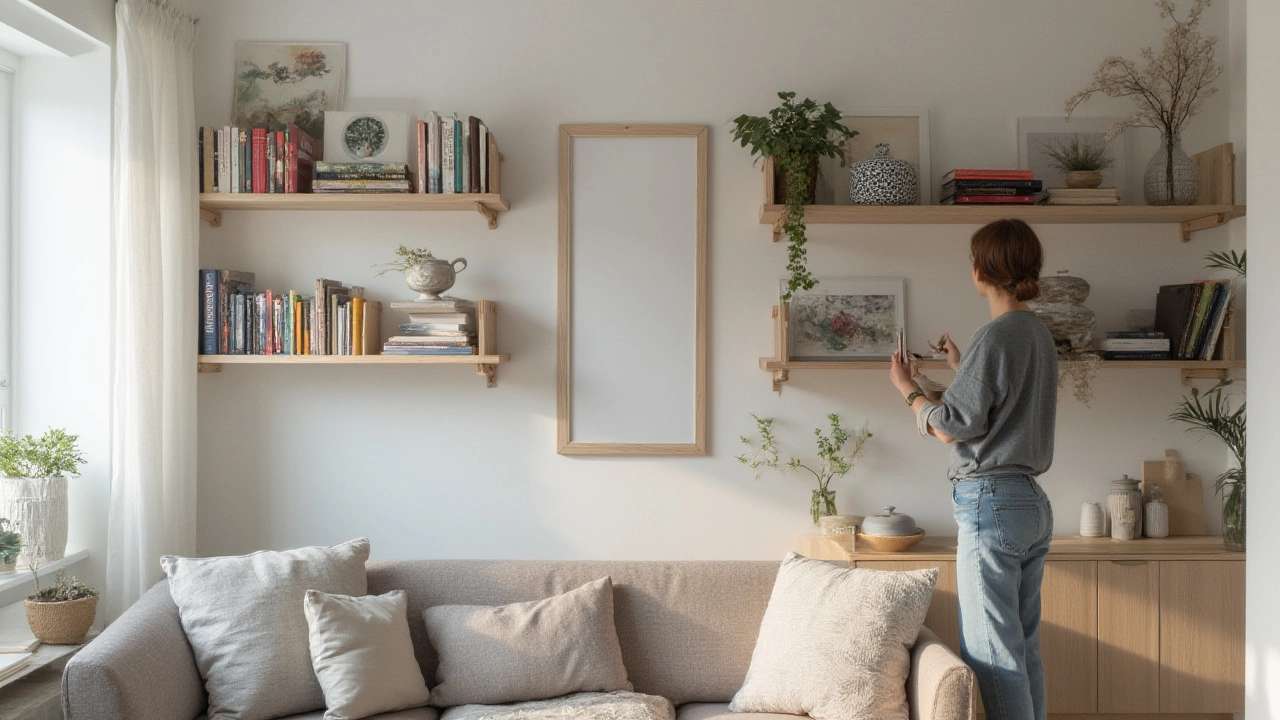
What Sets a Bookshelf Apart?
Now for the bookshelf. If a bookcase is the tank, the bookshelf is more like a ninja: lighter, flexible, and good at sneaking into small or odd spots. Bookshelves are basically open shelving—sometimes floating, sometimes built-in, sometimes bracketed to the wall. The sides may or may not exist. Got an awkward nook under your stairs? Put up a bookshelf. Need storage above your desk without taking floor space? Floating shelves do the trick. Unlike a full bookcase, these can be installed at any height or length you need, making them super flexible for renters and homeowners alike.
Most people grab bookshelves for tight spots, accent walls, or when they want minimal clutter touching the floor. They’re usually not meant for major weight loads; think paperbacks, a few trophies, and a succulent, not your entire collection of heavy encyclopedias. But modern hardware has improved—heavy-duty brackets or hidden supports can hold up to 100 pounds per shelf. Still, make sure to use wall anchors, especially if you’ve got old plaster. You don’t want a crash in the middle of the night. Bookshelves can be custom-built to fit sloped ceilings, corners, or odd wall spaces. That’s something a standard bookcase can’t always manage.
Designers love bookshelves because of their flexibility. You see them framing beds, lining hallways, or even circling doors. No two installations are the same. Floating bookshelves, in particular, started gaining popularity in the 2000s, thanks to Scandinavian design trends that favor airy, minimalist rooms. And don’t just limit them to books. People use them for everything: toy displays, sound bars, plants, photos, and collectibles. You can change the look instantly—swap out what you display and the mood shifts from businesslike to playful. If you want to make a bookshelf blend in, paint it the same color as your wall. Go bold, and contrast it for a gallery look. Modern floating shelves sometimes use hidden “keyhole” or “French cleat” mounts, so the supports disappear and the shelf seems to hover by magic.
Maintenance is simple. With open shelves, dust can build up, so plan on a wipe-down every couple of weeks. If you use particleboard or laminate, be extra careful about condensation from plants or cups. And watch out with kids—especially if you’re mounting high shelves. The right placement can draw the eye upward and make rooms feel bigger. But overcrowd a bookshelf, and it gets messy fast. If you’re a collector, leave spaces between objects so things look curated, not cluttered. Want a pro tip? Group books by color for a modern, visually soothing result. Or tilt a few vertically and stack others horizontally to break up the line and add texture.
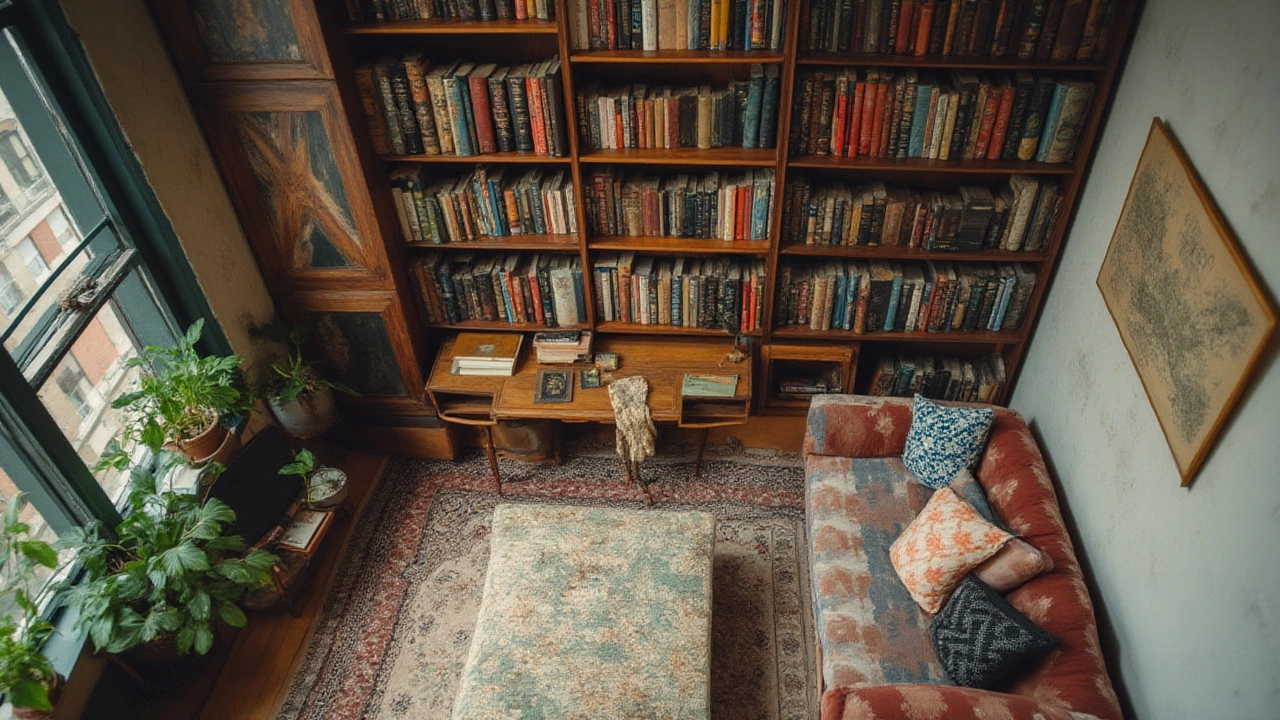
Bookcase or Bookshelf: Which Is Right for You?
Picking between a bookcase and bookshelf comes down to your needs, space, budget, and even personality. Love order, hate dust, have lots of heavy tomes? You’re a bookcase person. Crave flexibility, easy updates, and want to fill a tricky space? Go bookshelf. Here’s a quick way to compare at a glance:
| Feature | Bookcase | Bookshelf |
|---|---|---|
| Structure | Freestanding, enclosed sides/back | Open, wall-mounted or built-in |
| Typical Load | 300-500 lbs total | 80-100 lbs per shelf |
| Flexibility | Limited (depends on size & space) | High (customizable installation) |
| Mobility | Moveable, but bulky/heavy | Fixed to wall |
| Design Options | Classic, Modern, Glass doors | Floating, corner, modular |
| Maintenance | Easier (enclosed protects contents) | More dusting needed |
| Best For | Heavy books, display plus storage | Light books, decor, tight spaces |
Still can’t decide? Take a walk through your space. See what’s possible. If you have more floor space than wall space, a bookcase might be a better bet. If you want open, breathable storage, go bookshelf—especially if you crave a more modern look or need to fit furniture around outlets, radiators, or odd corners. No matter which you choose, always measure twice—height, width, and depth. Delivery mishaps or bruised shins are not fun.
Here’s a practical tip: If you’re outfitting a small office or kid’s room, a combination setup often works best. Place a bookcase for bulk storage, then sprinkle in bookshelves where you want display or accent areas. For renters who can’t drill many holes, go for a slim bookcase instead of bookshelves. If you have more books than shelf space, it’s time to do a quick edit—keep only what you love, and donate the rest. And if you want an Instagram-ready display, add art, plants, or framed photos between stacks for a curated look.
Some folks blend the two for maximum flexibility. Modular systems—think IKEA’s KALLAX or custom Elfa shelves—can act as shelves or cases, depending how you stack and support them. That means your storage can grow with you: add, move, or remove pieces as your needs change. For those who love statistics: in the last decade, storage furniture sales have climbed by almost 20% as people spent more time at home—sparking a boom in creative bookshelf and bookcase designs everywhere from small apartments to open lofts. Go classic or go modern, but now you know the difference—and that little detail gives you an edge the next time you shop or redesign your space.
